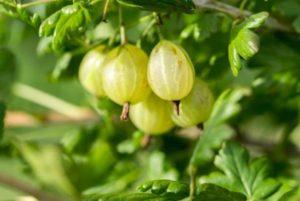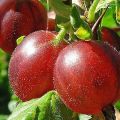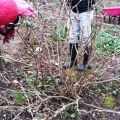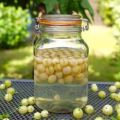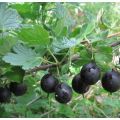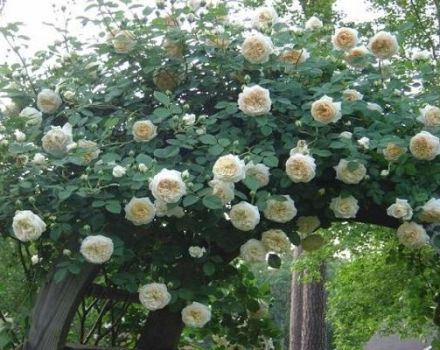Description and characteristics of the gooseberry variety English yellow, planting and care
Gooseberry is a berry that is popular with summer residents, the type of English yellow attracts with its taste and ease of care. The berries are suitable for storage and contain all the essential vitamins. Used for preservation for the winter and for fresh consumption.
General information about the variety English yellow
Shrub 1.5 meters high, slightly spreading. The English gooseberry variety has a high degree of resistance to low temperatures. The origin of this variety is unknown, but breeders note the yield and taste of the fruit.
The berries have the following description: medium density, yellow pulp, do not crumble after ripening. The average weight of a berry is 5 grams, but with a high yield, the weight of a gooseberry can be up to 7 grams.
Gooseberry shoots are covered with single thorns, small leaves are dark green in color. Inflorescences are white with brown sepals.
Pros and cons of gooseberry
The culture has advantages and disadvantages that you need to look out for when growing.
| pros | Minuses |
| Berries of good taste | With high humidity, the berries crack |
| Berry size | Culture is not resistant to spherotek |
| Does not crumble after ripening, making harvesting easy | |
| Keep their presentation for a long time | |
| High yield | |
| The shrubs are slightly spreading, which makes it comfortable to care for the crop | |
| The spikes are of medium size | |
| The culture is resistant to disease and low temperatures | |
| The plant is undemanding to the type of soil |
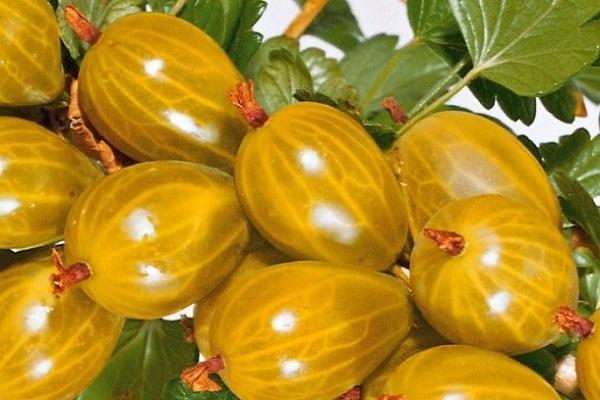
A crop with good palatability, making it popular with gardeners. Gooseberries have an attractive appearance and are used for harvesting for the winter.
Basic landing rules
To obtain a harvest, gooseberries require certain planting methods that not only reduce the risk of disease, but also improve taste.
Dates and place of landing
Gooseberry is a type of crop that can be planted during the fall and spring. In the spring, the bush is planted in the soil after the snow melts and until the moment when the buds begin to open. In autumn, the shrub is transplanted from mid-September to mid-October. In the period before the onset of frost, the culture takes root, and the plant is less susceptible to diseases.
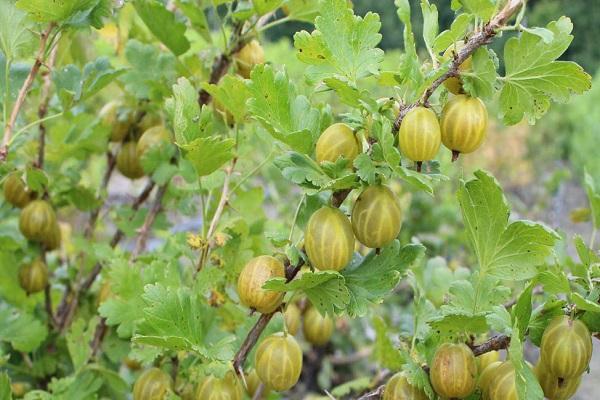
English gooseberries are undemanding to the soil, however, for the normal development of the culture, it is necessary to choose a soil with neutral acidity. The planting site should be sunny and not shaded by nearby trees. It is not recommended to use for planting places where soil moisture is increased, in which case the plant is exposed to such a disease as rot.
Site preparation
A planting site for English gooseberries is prepared in 4-5 weeks so that the soil has time to sink. The area where the gooseberries will be planted must be cleaned of grass and roots of other plants. If the crop is planted in the garden, a distance of at least 2 meters must be maintained between the planting site and other crops.
Before digging up the soil, you must prepare the mixture:
- humus - 10 kg;
- wood ash - 150 grams;
- superphosphate - 2 tablespoons;
- potassium - 2 tablespoons.
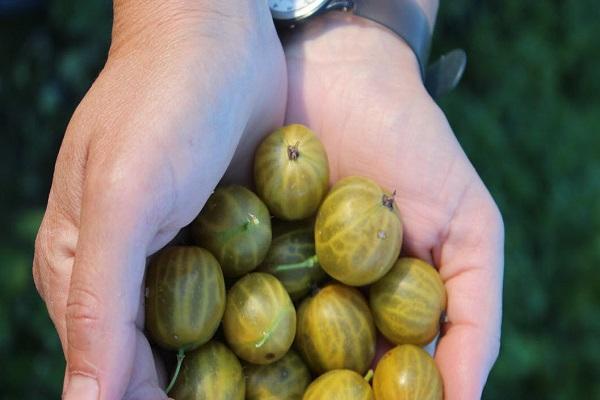
A deepening is made, the soil from the pit is mixed with the previously prepared composition and placed in the prepared pit. This will saturate the area with the substances necessary for root development.
Important. Gooseberries are not planted after plants such as raspberries and strawberries. In this type of soil, the plant will not be able to take root and develop to obtain the required yield.
Selection of seedlings
When choosing a seedling for planting gooseberries, you need to pay attention to the following features:
- The root should consist of 4-5 shoots at least 10 cm long.
- The escape must be free of external damage. Several shoots are allowed, this occurs if the seedling is from 2 years old.
- The length of the shoots should be 20-30 cm.
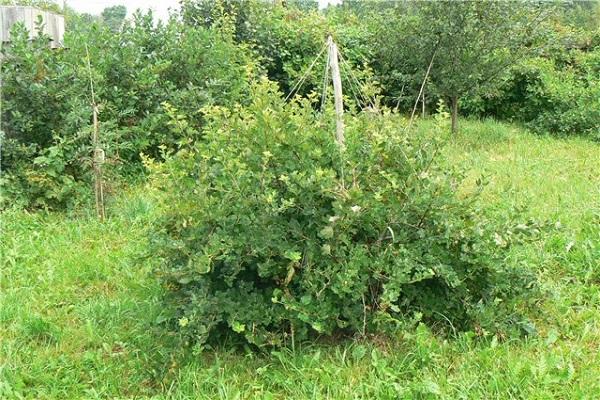
To reduce the period of adaptation of the plant to a new place, it is recommended to give preference to seedlings that have root protection in the form of a clod of earth. However, bare roots can be used as long as there is no visible damage.
Step by step process
Gooseberries must be planted according to the following algorithm of actions:
- a hill is formed in a previously prepared place;
- the seedling is set on a hill, and all the roots are straightened;
- the seedling is sprinkled with soil on top;
- the gooseberry neck must be immersed to a depth of at least 10 cm;
- the soil is compacted and watered with a bucket of warm water;
- the planted plant must be pruned, if this procedure was not performed earlier, only 5 lower buds are left.
When planting large quantities of gooseberries, it is necessary to maintain a distance of at least 1 meter between the bushes.
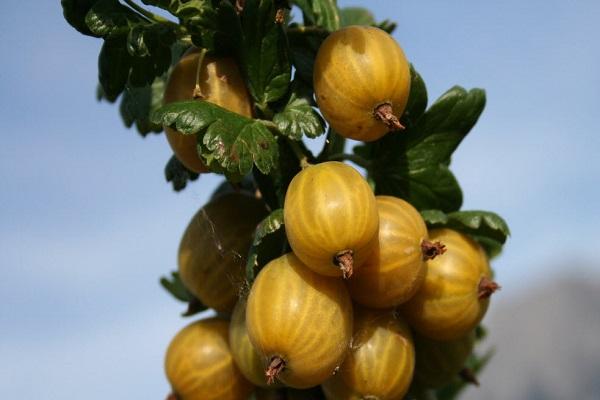
English gooseberry care rules
An adult bush, like a seedling, requires a certain type of care. Timely application of fertilizers and watering of the crop will promote the development of the shrub and the annual harvest.
Watering and feeding
The gooseberry variety tolerates mild drought, the English yellow species is susceptible to root diseases in the presence of excessive moisture. Watering the crop is carried out in several stages, among which it is necessary to highlight:
- the first is carried out on the 20th of May;
- the second watering is done in a month;
- the third is after the harvest.
In dry weather, the shrub should be watered every three weeks. Watering is carried out in the following way:
- measure the distance of 60-70 cm from the root of the bush;
- make a ditch 10 cm deep around the bush;
- water is poured into the ditch.
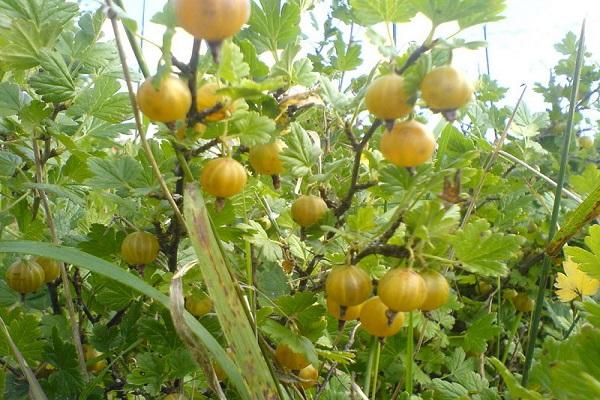
Up to 30 liters of water should be used per adult plant.
Fertilizing the soil is carried out according to the following scheme.
| Feeding period | Fertilizer type |
| First days of April | Boil 1 kg of potato peel in 10 liters of water. Leave to room temperature, add 200 grams of ash. Mix everything thoroughly and pour into the root area of the bush |
| After the color has dropped | Mix in 5 liters of water 200 grams of urea, 400 grams of superphosphate and 100 grams of potassium.A bucket of clean water is poured into the ditch, the resulting solution is on top |
| During fruit formation | Poultry manure is used in a proportion of 1 kg per 10 liters of water |
| After harvest | 2 buckets of humus are brought under the bush and watered abundantly with water |
It is recommended to apply fertilizer in the evening after sunset.
Pruning
In the second year after planting, 2-3 strong shoots must be left. Every year it is necessary to form a bush, while the old branches are removed, and young shoots are left in return.

Pruning is carried out in spring and autumn, all damaged and small shoots must be removed. It also removes branches that are intertwined in a large number of places. In order for the shrub to not outgrow to bear fruit, it is necessary to shorten the shoots by one third annually.
Shrub shelter for the winter
After the leaves fall, it is necessary to prepare the shrub for the winter period:
- clean the soil around the culture of foliage, dig up and add humus;
- collect bush branches and tie with a strip of fabric;
- process the branches with a solution of Bordeaux mixture (1%);
- wrap branches with burlap.
Digging the soil is necessary to eliminate pests that may be hiding in fallen leaves and branches.
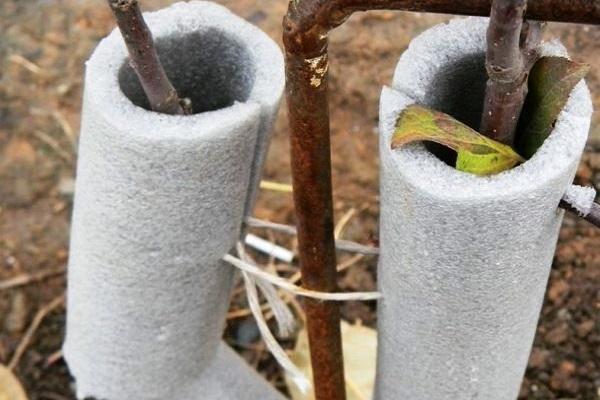
Harmful insects and control of them
The English gooseberry can be affected by the following types of insects:
- Gooseberry aphid - the pest forms seals on burgundy leaves. The pest feeds on the sap of the foliage and leads to their yellowing. To eliminate aphids, the substance "Sumicidin" is used.
- Spider mite - appears as light-colored spots on the leaves. May lead to a decrease in yield and crop death. It is necessary to treat a plant from a tick before bud break. The substance "Vofatox" is used.
- Moth is an insect that penetrates the berries and causes them to rot. To eliminate the pest, it is necessary to use "Karbofos", which is sprayed on the bush until the inflorescences appear.
Treatment for possible pests must be carried out after the snow melts in April.
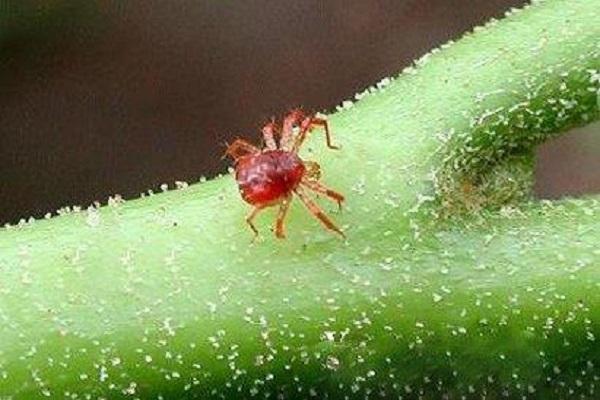
Protection against gooseberry diseases
Gooseberry is resistant to disease, but the following types of disease may appear:
- Powdery mildew - appears as a gray bloom on the leaves. The disease leads to leaf curling and yellowing. To prevent the disease, it is necessary to treat with a solution of vitriol before bud break.
- Anthracnose - affects the shoots, leads to cracking of the bark, as a result of which the plant dries up. This disease belongs to the fungal type and can affect the plant, starting from the root system. To combat the disease, spraying with "Kuprozan" is used before the buds of the culture begin to open.
- Rust - manifested by the appearance of brown spots on the leaves and shoots. To prevent the disease, the drug "Nitrofen" is used.
The affected shoots must be removed from the shrub, otherwise the disease will progress.
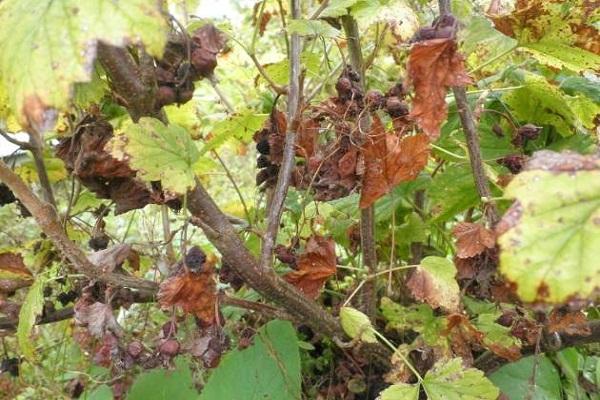
Reproduction methods
Most often, propagation is used with cuttings of two years of age. For this, the shoot is bent in the ground. After the cutting takes root, pruning and replanting are carried out. Dividing the bush can also be used, during which the bush is divided into two parts and planted in different places. Such a procedure is carried out in the fall.
Harvesting and storage
Ripe berries are yellow with a honey tint. The fruit tastes sweet and aromatic. The English gooseberry ripens at the end of July.
After harvesting, the berries are placed in a box in a thin layer and placed in a cool place. Gooseberries can be stored for up to 5 days. In order to increase the shelf life, it is recommended to pick it 2-3 days before full ripening, however, such berries have a less intense taste.
English gooseberries are famous for their flavor, which is unlike other varieties. Also, the crop has a high yield and an attractive appearance of berries. The shrub adapts to its new growth site and does not require over-watering.
